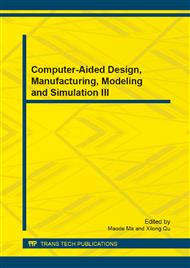p.342
p.349
p.354
p.359
p.363
p.368
p.374
p.380
p.384
Spectrum Sensing Optimization Based on Multiple Antennas for Cognitive Radio Networks
Abstract:
To protect the primary user and improve the credibility of spectrum sensing, a spectrum sensing optimization algorithm based on antenna selection is proposed in this paper. In the case where the channel coefficient and signal-to-noise ratio are not known, one antenna weighting and selection algorithm based on auto-correlation is proposed. This algorithm can also be used to distinguish whether it is necessary for antennas selection so as to optimize spectrum sensing performance. Based on auto-correlation ratio, selecting parts of the antennas to cooperatively sense spectrum can maximize the detection probability. Simulations are used to verify the method. The results indicate that the proposed antenna weighting and selection algorithm can be able to optimize network performance.
Info:
Periodical:
Pages:
363-367
Citation:
Online since:
October 2013
Authors:
Price:
Сopyright:
© 2014 Trans Tech Publications Ltd. All Rights Reserved
Share:
Citation:


